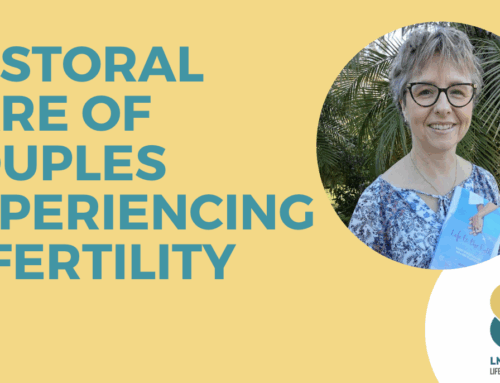Divorce statistics are often quoted and misquoted in the media and in conversation. Yet it’s not a simple matter of percentages.
A Fresh Look At Divorce Statistics: Signs Of Hope And Concern
For years, the statistic that 50% of marriages end in divorce has been acknowledged as a common fact. These statistics, particularly as they relate to Catholics, are being challenged by a Catholic research center.
The Center for Applied Research in the Apostolate (CARA) at Georgetown University, a non-profit research center dedicated to conducting social scientific research about the Catholic Church, recently released a new analysis of statistics about the number of Catholics who have divorced.
CARA reports that the 1-in-2 number reported so widely is sloppily calculated by dividing the number of divorces per year by the number of marriages per year. In 2011, there were 3.6 new divorces per 1,000 and 6.8 marriages per 1,000. The calculated rate of divorce for 2011 using this method would be 53%. In order to find a more accurate annual divorce rate, a longitudinal study over decades would be necessary, according to CARA blogger Mark M. Gray.
Does one’s identification as Catholic make a difference to one’s likelihood of divorcing?
In 2012, studies showed that 20% of Catholics had ever been divorced versus 26% of all adults. Twenty-four percent of those with no religious affiliation had ever been divorced, 31% of Protestants and 26% of those with other religious affiliations.
At first glance, it appears to be good news, for both Catholic and non-Catholic alike. Yet what these numbers hide is the lower rate of marriage today. In the 1970s, nearly 75% of adults were married. Today that number is 52%. Since one cannot divorce unless first being married, the lower percentages do not necessarily indicate a more positive view of the lifelong commitment of marriage. It is also important to note that these statistics are not measuring the percentage of marriages that end in divorce, since some people may have wedded more than once.
In fact, the divorce statistics based on religious affiliation are based on all adults, not upon all married adults. Looking at the number of adults who have ever been married and have divorced, the statistics are not as promising. While 28% of Catholics who have ever married have divorced, 36% of all adults who have ever married have experienced divorce. The percentage of ever married adults with no religious affiliation who have divorced is 42%, Protestants are 39% and those with other religious affiliations are 35%. Clearly, Catholics have the lowest percentage, but these numbers still only tell part of the story.
In 2011, only 7.7% of U.S. marriages were held in a Catholic church, although a quarter of the population is Catholic. [1] CARA has expressed interest in studying any possible link between not marrying in the Church and divorce.
Another question raised by CARA is the number of divorced Catholics who have sought a declaration of nullity (annulment), which finds that a valid marriage never came into existence. Fifteen percent of Catholics who had obtained a civil divorce said they had also sought an annulment. Although this seems like a low number, United States annulment cases account for 49% of the worldwide Church’s annulment cases, compared with the next highest countries – Poland (6.4%), Brazil (5.6%) and Italy (5.1%).
Although CARA has not studied the impact of marrying in the Church (versus simply checking “Catholic” as one’s religious affiliation) on one’s likelihood of divorcing, they did produce an interesting report regarding the attitudes of Catholics toward marriage. Released in 2007, “Marriage in the Catholic Church: A Survey of U.S. Catholics” catches a glimpse of Catholic adults’ understanding of indissolubility, fidelity, divorce, openness to children and other related topics. The survey also inquires about marriage preparation practices and attitudes toward marriage enrichment.
While the national divorce rate may be under the oft-quoted 50%, and divorced Catholics represent the lowest percentage of U.S. adults ever divorced, CARA’s research has given the Church clarity about the continuing need to engage adults about the meaning of marriage and how to remain faithful to one’s spouse for a lifetime.
—
[1] Note that since a Catholic may petition for a dispensation to hold a Catholic wedding in a location other than a Catholic church, for example, a wedding between a Catholic and a non-Christian, the number of valid Catholic marriages may be higher than those marriages celebrated in a Catholic church building.
For Your Marriage | Original article: here



This report doesn’t attempt to identify the relationship between church attendance and divorce. That’s the metric which matters. People who attend Church regularly are much less likely to get divorced. So why doesn’t the Catholic or Protestant Church make that information available? Because happier people don’t get divorced as often. And if Church does make people happier, than the State would lose its exclusive claim on happiness. What if people discovered that religion and community are the keys to happiness, rather than political compliance? They wouldn’t submit to an expensive and intrusive government anymore. In fact, they might even rebel. Happy people don’t need the government to do anything. Charity, mutual assistance, friendship, counseling, and guidance can all come from the Church community. And they don’t bill three hundred dollars an hour.
Thank you for sharing your personal experience with divorce. It takes a lot of courage to talk about such a sensitive topic. Your story will surely help those who are going through a similar situation. I think it would be helpful to provide resources for those who are struggling with the decision to divorce and its aftermath.